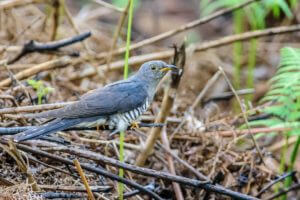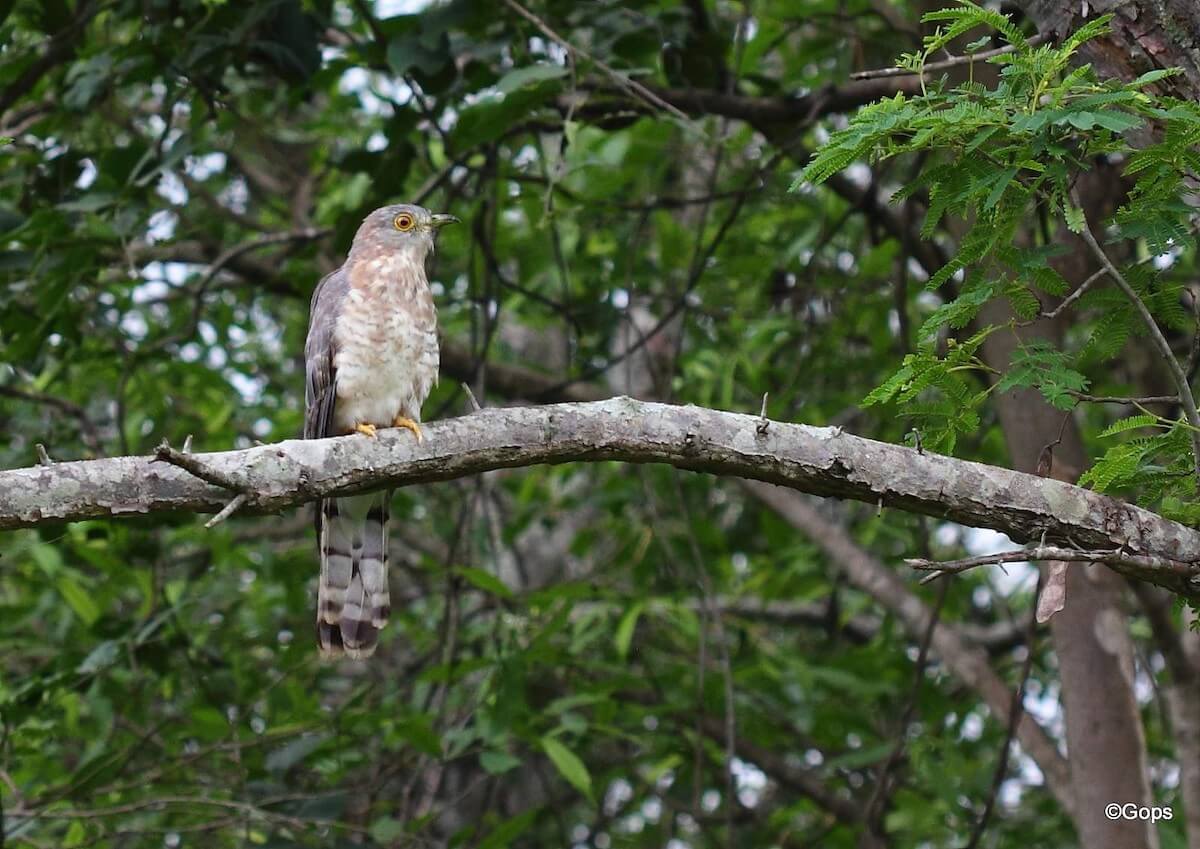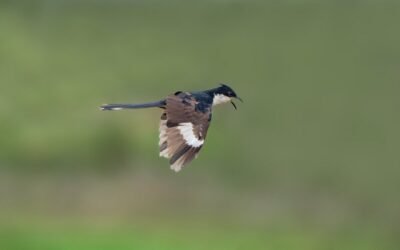 The challenge in May was to upload at least 30 no-X, complete checklists of a minimum 15-minute duration, with the winner being someone (chosen at random) who’s uploaded at least one list containing a breeding code.
The challenge in May was to upload at least 30 no-X, complete checklists of a minimum 15-minute duration, with the winner being someone (chosen at random) who’s uploaded at least one list containing a breeding code.
June welcomes the annual monsoon, often associated with the arrival of the Pied Cuckoo – a bird which migrates from Africa to India in time for the rains. So far, the data on eBird confirms the supposition of Pied Cuckoos arriving in numbers from June onwards (see map below) and the picture would become clearer once more records start coming in.
But it is not just Pied Cuckoos, other brood-parasitic cuckoos become active at this time of the year as well.
The challenge this month is to upload a minimum of 30 no-X, complete checklists of at least 15 minutes duration, of which at least three lists must document a brood-parasitic cuckoo (seen or heard).
checklists of at least 15 minutes duration, of which at least three lists must document a brood-parasitic cuckoo (seen or heard).
What birds are included in this list of brood-parasitic cuckoos? Here they are:
- Asian Koel
- Pied Cuckoo
- Chestnut-winged Cuckoo
- Large Hawk-cuckoo
- Common Hawk-cuckoo
- Hodgson’s Hawk-cuckoo
- Indian Cuckoo
- Eurasian Cuckoo
- Himalayan Cuckoo
- Lesser Cuckoo
- Banded Bay Cuckoo
- Plaintive Cuckoo
- Grey-bellied Cuckoo
- Asian Emerald Cuckoo
- Violet Cuckoo
- Square-tailed Drongo-cuckoo
- Fork-tailed Drongo-cuckoo

Indian Cuckoo © Balaji P B (Checklist)
Getting three birdlists with at least one of these cuckoos (out of at least 30 birdlists) shouldn’t be so hard as some species are very common, and most are very vocal in this season. But why are all these cuckoos active now?
Cuckoos are brood parasites and the females lay their eggs in the nests of other birds. Hence, when cuckoo are active, it is safe to assume that the bird species they parasite upon are breeding! Please do help document the locations and timing of breeding of birds by adding a suitable ‘breeding code’ whenever you see any signs of breeding: from ‘Singing male’ (indicating possible breeding) to ‘Nest with young’ (indicating confirmed breeding).
More information on these breeding codes is available at this help page; and you can enter the appropriate code next to each species in your eBird list by clicking on ‘Add details’ and then use the ‘Breeding code’ drop-down menu.
The Gap-filling Challenge this month (June 2017) is to upload a minimum of 4 complete checklists ![]() of at least 15 minutes duration each from one or more of the districts from the list of 353 districts that have 30 minutes or less of birding represented on eBird for May.
of at least 15 minutes duration each from one or more of the districts from the list of 353 districts that have 30 minutes or less of birding represented on eBird for May.
You can download the list of target districts in any of the following formats: CSV(13kb) PDF(93kb)
Please upload all your lists by 5 July 2017 so that we can announce the results the next day.
Here are the general rules of our monthly challenges. And check out the yearlong challenges as well! You can keep track of fresh lists coming in from India at this page.
Important. if you are new to eBird, please read this description first, and do take a look at our quick-start infographic and also the more comprehensive Beginner’s Guide.





In earlier years we have observed the Jacobin cuckoo weeks before the monsoon. Key difference is that they are skulking at this time. They become more visible as they begin mating rituals after the rains start.
As if the Asian Koel Male was just waiting for this month’s challenge to kick off, today he nonchalantly keep singing, calling for almost an hour in front of my house, kept me reminding till the time, i did’t submit his entry in the checklist and uploaded on ebird.
Cheers and happy birding with the cuckoos this month.
Ajay